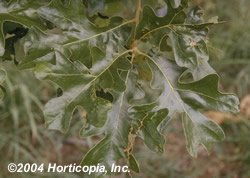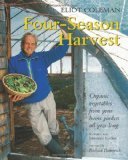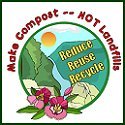You are here:
Home > Trees > Post Oak
Post Oak
Quercus stellata

Price Each
$23.95

Post Oak:
The Post Oak tree, Quercus stellata, is a small to medium-sized tree. The bark of the Post Oak is similar to that of the White Oak, but somewhat darker and often fissured into scaly ridges. The leaves of Post Oak trees are usually 4 to 5 inches long and they are thick and somewhat leathery. They are dark green and shiny on the upper surface and lighter green and rough hairy beneath. The Post Oak commonly is associated with the Blackjack Oak. The Post Oak usually grows in dry, sandy to rocky soils. The wood is hard and strong, and is very durable when in contact with soil. Its use is mainly for posts, railroad ties, mine props, and sometimes as fuel. In fact, the Post Oak sometimes is called the Box White Oak. Acorns are 1/2 to 2/3 inches long and ovoid in shape. The acorns matures in one year, ripening September to November. The leaves turn to a golden color in the fall.

FREE Garden Journal!!
Join "Garden Notes" and plan for Harvest Success as you track and record your gardening progress.
Your Free Personal Garden Journal has pages for jotting down notes on the seeds you start,
your new plantings, when you fertilized, and even a graph to plot a new garden.
What's New?
"Organic food has a higher nutritional value than ordinary produce, a study by Newcastle University has found."
"A team grew fruit, vegetables and reared cattle on adjacent organic and non-organic sites across Europe.
They found up to 40% more antioxidants could be found in organic fruit and vegetables than in non-organic.
The team said the findings call into question the current stance of the Food Standards Agency (FSA), which is neither for nor against organic food."
Organic Food Gardening Guide
Free
Gardening Catalog
Click Here
Book of the Month

A book full of valuable information on how to harvest fresh vegetables and salad
ingredients literally year-round--yet without an expensive greenhouse or indoor light garden set-up.
Coleman combines succession planting (small sowings three or more times, rather than
one big endeavor) with cold-frame growing in the winter months. He includes how-tos for building simple cold-frames.
Read More...
Garden Tip of the Day










